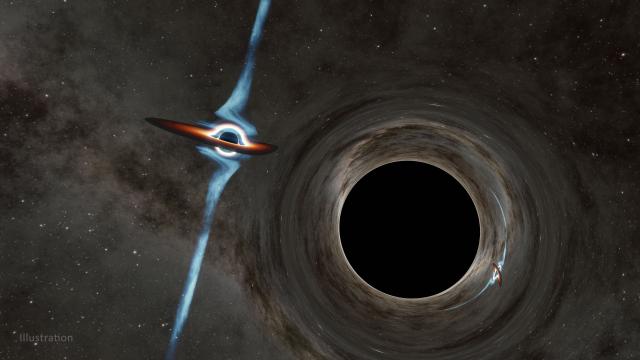Since the gravitational waves predicted by Einstein were first detected in 2015, astrophysicists have been pondering the gravitational wave background — the cumulative undulations of these spacetime ripples as they cross the cosmos.
Now, one astrophysicist associated with the background hunt developed a model to sniff out ancient supermassive black holes, which could help explain how black holes form and evolve. The research was published in the Astrophysical Journal Letters.
Black holes — massive, dense objects with gravitational pulls so intense that light cannot escape their vicinity — are plentiful. One recent study estimated that 40 quintillion black holes lurk in the observable universe, but how they grow into supermassive black holes remains shrouded in mystery.
The gravitational wave background could help. As black holes and other massive objects like neutron stars interact, they rock the cosmic boat and generate gravitational waves that ripple through the universe.
Those waves are picked up on Earth by observatories like the Laser Interferometer Gravitational-Wave Observatory (LIGO), which detects these nearly imperceptible ripples using mirrors and laser light. The LIGO-Virgo-KAGRA Collaboration resumed operations last month with improved sensitivity.
“We have really good measurements for the masses of the supermassive black holes for our own galaxy and for galaxies close by,” said Joseph Simon, an astrophysicist at the University of Colorado, Boulder and the study’s author, in a university release. “We don’t have those same kinds of measurements for galaxies farther away. We just have to guess.”
In the recent study, Simon calculated approximate black hole masses for the universe’s largest galaxies, and modelled the gravitational wave background those galaxies could create.
The model predicted more large galaxies billions of years ago than earlier studies, indicating that ancient black holes may have grown faster than previously expected.
Those black holes would need to have been very massive in order to foster such large galaxies, the finding which would change the way astrophysicists think about black hole evolution. The result does come from a model, so real world observations would help clarify the matter.
A vexing mystery of black hole evolution is the dearth of intermediate mass black holes. Stellar-mass black holes are regularly spotted and supermassive black holes (billions of times the mass of our Sun) lurk at the centre of galaxies, but black holes of intermediate mass…just don’t turn up.
Supermassive isn’t even the maximum for black holes. The supermassive black hole at the centre of our Milky Way, Sagittarius A*, is four million times the mass of our Sun. But earlier this year, astrophysicists found a black hole 30 billion times the mass of the Sun, classifying it as an “ultramassive” black hole; that is, more than 10 billion times our Sun’s mass, according to NASA.
With countless black holes in the observable universe but a gulf separating the small bodies from the very, very large ones, accurately measuring the masses of ancient supermassive black holes could help explain how these mysterious compact objects grow.
“We’re starting to see from a variety of different sources that there have been pretty massive things in the universe since pretty early on,” Simon said. Simon is part of the North American Nanohertz Observatory for Gravitational Waves (NANOGrav), a collaboration that is seeking the gravitational wave background.

The hunt for gravitational waves is done by timing light arriving at Earth-based observatories from pulsars, those rapidly spinning objects in deep space. The pulsars flash with light as they spin, allowing astronomers to use them as cosmic lighthouses (to carry through the analogy of a gravitational wave ocean). When light from the pulsars arrives at Earth-based detectors at a different time than expected, it indicates that perturbations in spacetime changed their timing.
NANOGrav announced a signal that looked like the first glimpse of a gravitational wave background in 2021, based on 12 years of data from a pulsar timing array.
Scott Ransom, a staff astronomer at the National Radio Astronomy Observatory and a co-author of the paper describing those findings, told Gizmodo at the time that: “We can get a lot of information about the full history of the universe and how galaxies merge and interact just by seeing this background signal.”
The best is yet to come. A planned space-based observatory named LISA recently cleared Phase A of its mission lifetime cycle, meaning it could eventually get off the ground (and into solar orbit). On a much sooner timescale, the NANOGrav collaboration has news to share, according to one of the collaboration’s scientists who teased an announcement on June 29.
The comments on that post are filled with excited speculation about what the news might be. Regardless of what it is, we’ll be covering it.
